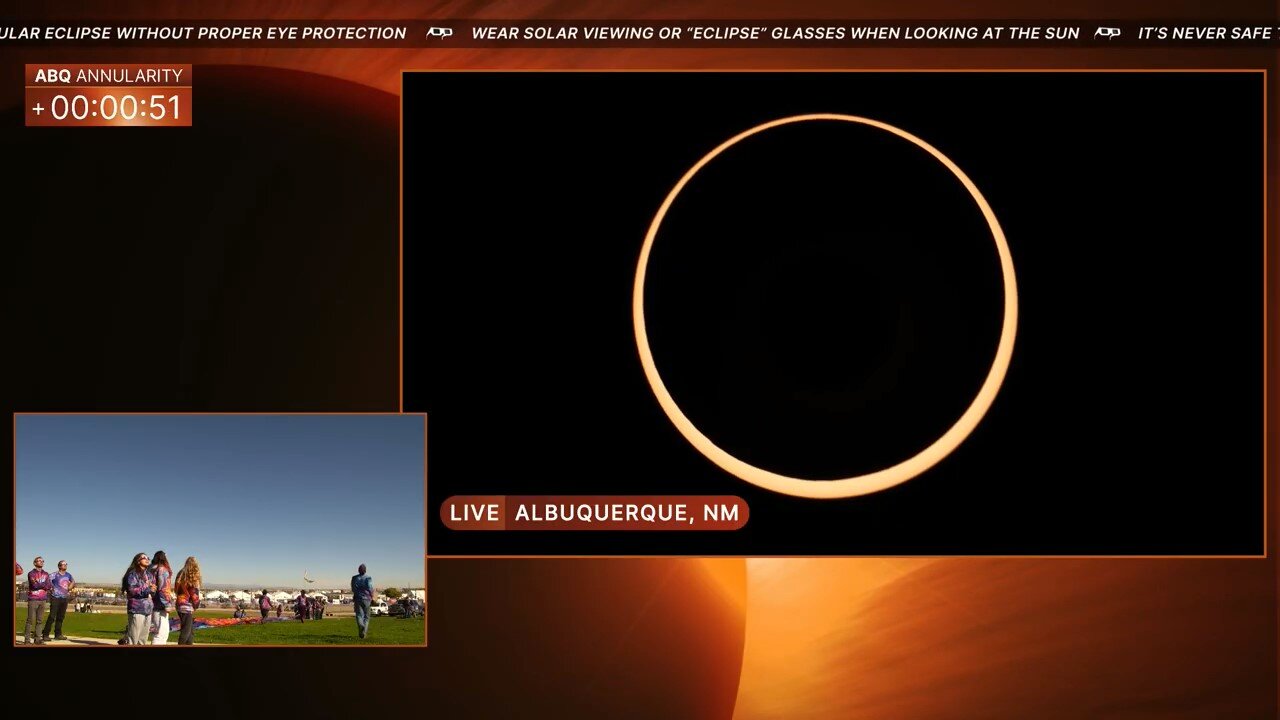Premium Only Content

The “Ring of Fire” Solar Eclipse
The "Ring of Fire" solar eclipse, also known as an annular solar eclipse, is a unique and stunning astronomical event that occurs when the Moon passes between the Earth and the Sun but doesn't completely cover the Sun's disk. Instead, it creates a bright, ring-like appearance, or "ring of fire," around the edges of the Sun. This happens because the apparent size of the Moon in the sky is smaller than that of the Sun, so it cannot completely block out the Sun's bright disk.
Several key features of a "Ring of Fire" solar eclipse include:
The Annular Phase: The eclipse begins as a partial solar eclipse, with the Moon gradually moving in front of the Sun. However, during the annular phase, which is the peak of the eclipse, the Sun's center remains uncovered, and a ring or annulus of sunlight surrounds the dark disk of the Moon. This ring is often referred to as the "Ring of Fire."
Path of Annularity: The "Ring of Fire" effect is only visible along a specific path on Earth. This path, known as the path of annularity, is relatively narrow and depends on the alignment of the Sun, Earth, and Moon. People within this path can witness the annular eclipse, while those outside the path will experience a partial solar eclipse.
Duration: The duration of the annular phase during a "Ring of Fire" eclipse can vary but typically lasts for a few minutes, with the entire eclipse event lasting a few hours as the Moon gradually moves across the Sun.
Eye Safety: Just like with any solar eclipse, it's essential to observe a "Ring of Fire" eclipse safely using proper eye protection, such as eclipse glasses or solar viewers. Looking at the Sun without protection can cause severe eye damage.
"Ring of Fire" solar eclipses are less common than total solar eclipses, where the Moon completely covers the Sun's disk, and they offer a captivating celestial spectacle. The appearance of a "Ring of Fire" eclipse can be particularly beautiful, with the bright ring contrasting against the dark silhouette of the Moon. These events are popular among astronomers, skywatchers, and photographers who seek to capture the striking visuals of this unique astronomical occurrence.
-
 LIVE
LIVE
I_Came_With_Fire_Podcast
8 hours agoTHE HUNDREDTH EPISODE!!!
62 watching -
 34:00
34:00
Tactical Advisor
1 hour agoRetiring This Rifle | Vault Room LIve Stream 019
3.09K3 -
 16:29
16:29
Sideserf Cake Studio
3 hours agoThis Cruise Ship Is A CAKE!
2251 -
 14:49
14:49
Clownfish TV
18 hours agoNintendo Switch 2 BACKLASH! Gamers BOYCOTT Over Pricing?!
9714 -
 24:17
24:17
JasminLaine
17 hours agoCTV Reporter DESTROYS Carney By Quoting His BOOK—His INSANE Answer STUNS Host
31015 -
 24:47
24:47
World2Briggs
23 hours ago10 Cities Where The High Cost Of Living Just Isn't Worth It
1332 -
 LIVE
LIVE
SoundBoardLord
1 hour agoSaturday Variety Gaming with Friends!!
191 watching -
 8:35
8:35
ARFCOM News
21 hours ago $0.04 earnedThis Is How We End The NFA | Booker's Hypocrisy | ATF Facial Recognition
3572 -
 10:51
10:51
IsaacButterfield
1 day ago $0.20 earnedToddler Expelled From School For Being “Transphobic”
1.18K3 -
 24:52
24:52
Degenerate Jay
20 hours agoIs Marvel Ruining Venom Now? Why Is Mary Jane Venom?
2283